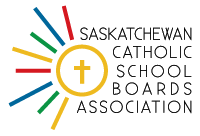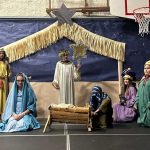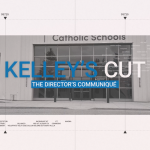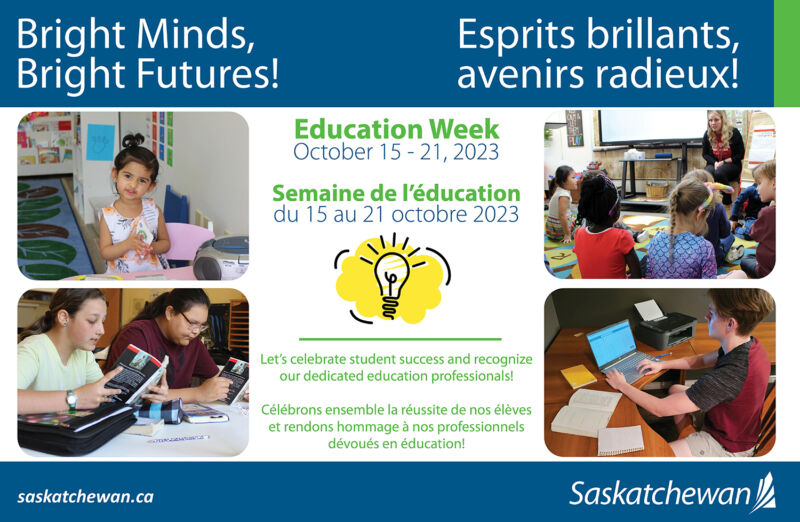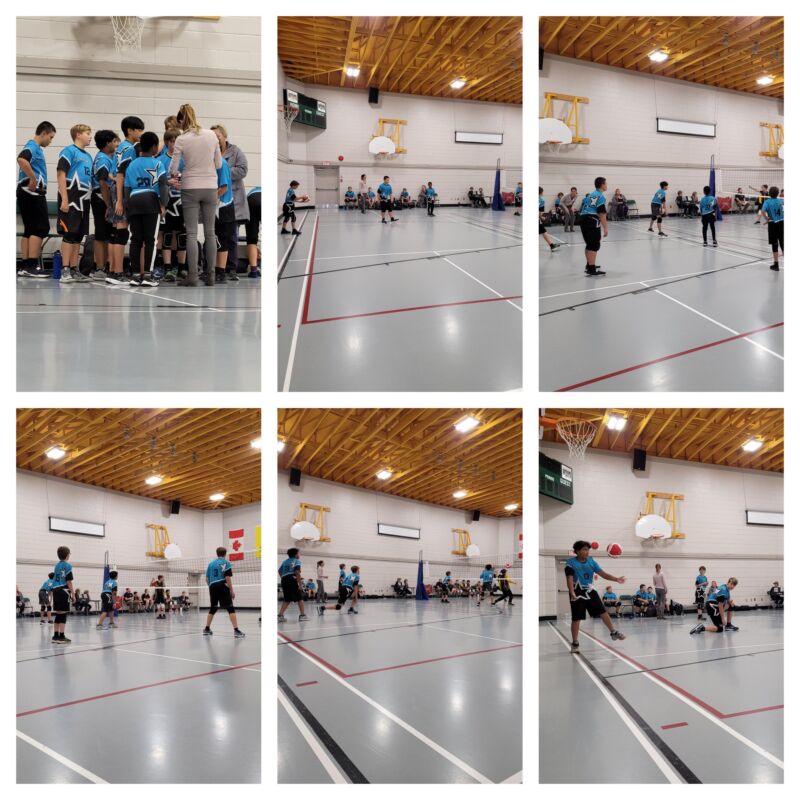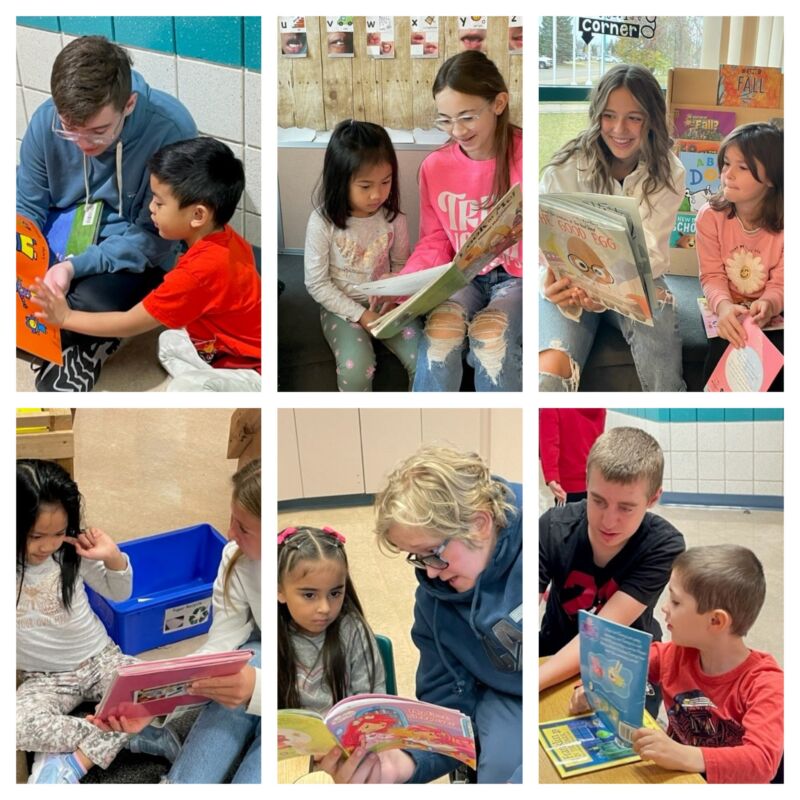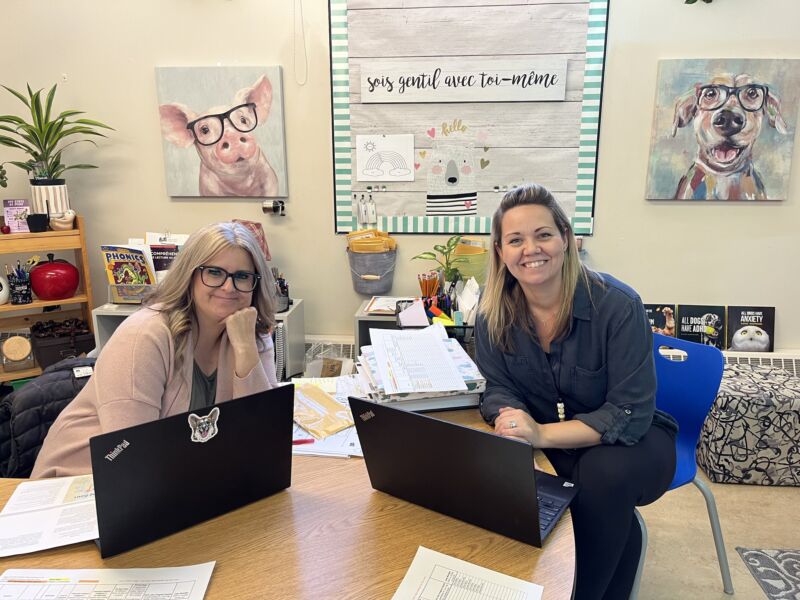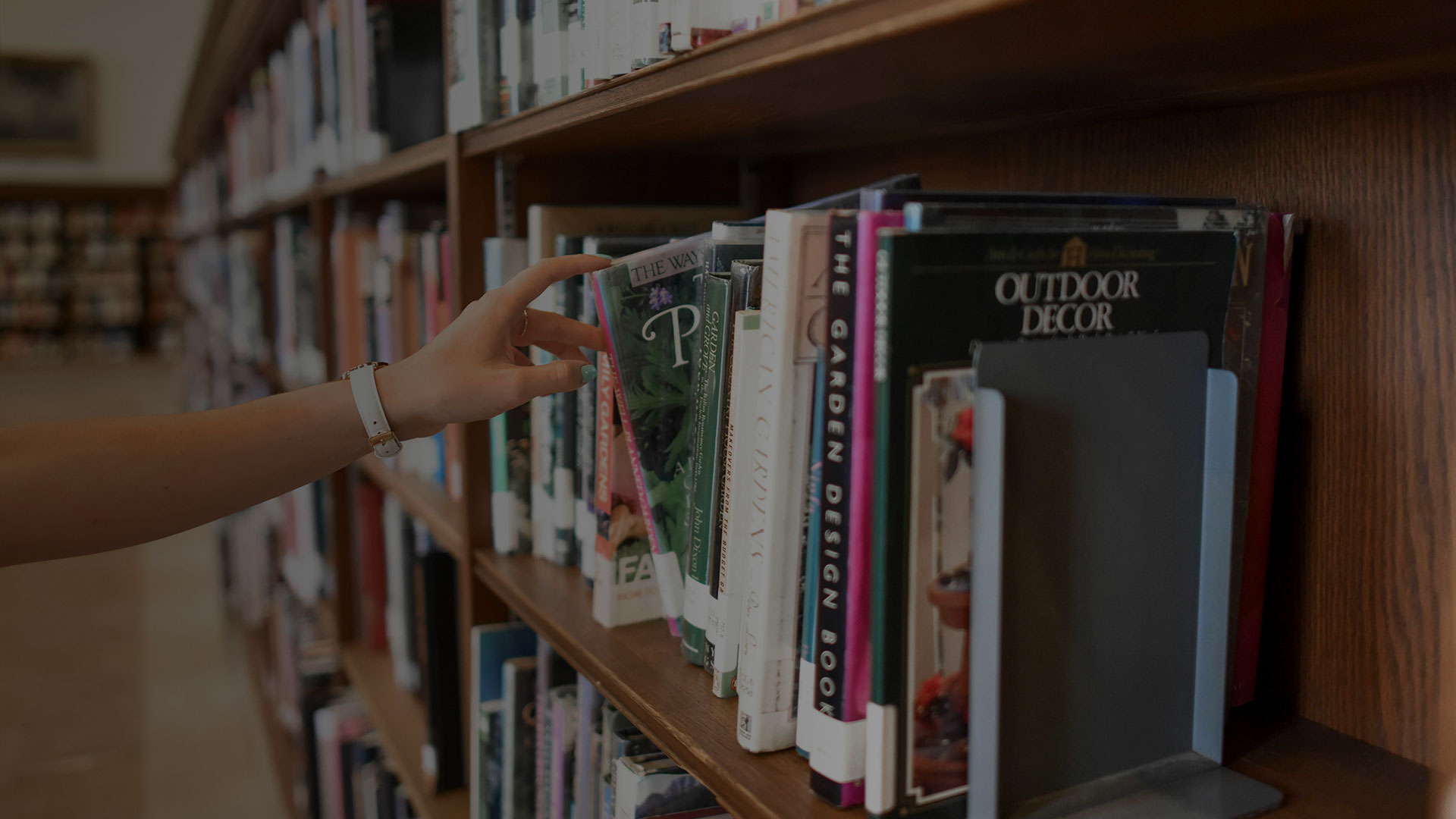This article was originally published on the Roman Catholic Diocese of Saskatoon’s news site and is republished here with permission. Written by Wendy Dale, teacher at Holy Cross High School. Photos by Wendy Dale.
Holy Cross students engage in classroom conclave to learn more about process of selecting a pope
Pope Francis has had a prominent part in both my Catholic Studies 20 and 30 classes. In CS 20, we examine a little booklet called “10 Things Pope Francis Wants You To Know”, and in CS 30 we look at the diversity of The Pope Videos.
My CS 30 class at Holy Cross High School in Saskatoon had just completed the Videos assignment on Holy Thursday, so the Easter Monday death of the pope whose words they had listened to for all of Lent had quite an impact on them.
There were many questions about how we get a new pope, so like many teachers, I decided to run a classroom conclave.
I had also done this in 2005 during the conclave that elected Cardinal Ratzinger as Pope Benedict XVI. My students at that time elected Cardinal Arinze from Nigeria – who is still alive at the age of 92. Cardinal Bergoglio (later Pope Francis) was in the running at that time, promoted for his devotion to the poor, and Cardinal Ratzinger was recommended because he knew 10 languages. It was a wonderful experience, and this current group of students was up for the task this time around.
We began the pre-scrutiny process by partnering up and selecting cardinals from the College of Cardinals Report.
Students created a poster and a powerpoint slide of their cardinal which included the country they were from, their age, when they were ordained a priest, who appointed them cardinals, and what name would they choose if they were elected.
Students promote Cardinal Pizzaballa as a papal candidate during the classroom conclave at Holy Cross Catholic High School in Saskatoon.
On May 6, the day before the actual conclave at the Vatican, the students presented their cardinals and why they should be elected as the next pope.
On May 7, we began by “locking up” all the cell phones, and then selecting the Three Scrutineers, and Two Revisers. We all recited The Oath of Secrecy, and then the ballots were handed out.
When everyone had written the name of their chosen cardinal on their ballot, ballots were folded in half, held in the air, and we recited the declaration of having voted – in Italian – before bringing the ballots to the Scrutineers. Ballots were placed on a plate, and then dropped into a chalice.
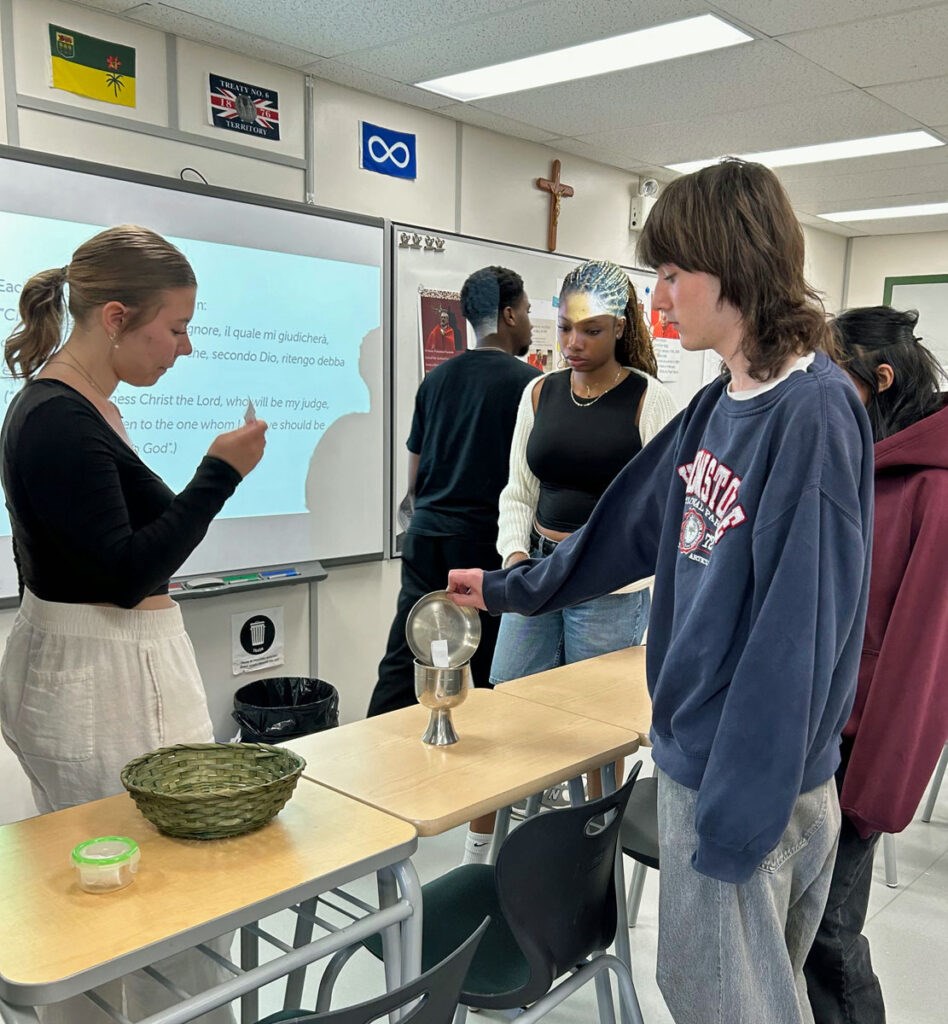 Student electors place their ballots into the chalice during the classroom conclave exercise.
Student electors place their ballots into the chalice during the classroom conclave exercise.
When everyone in the room had completed that task, the First Scrutineer shook the chalice, and then counted the ballots to ensure that there were the same number of ballots as people in the room. With that task complete, the First Scrutineer then read the name of the first ballot selected, passed the ballot to the Second Scrutineer while saying the name quietly. The Second Scrutineer confirmed the name, then passed the ballot to the Third Scrutineer, who also confirmed the name, and then announced loudly to the class the name on the ballot.
The First Reviser kept track of the votes by putting check marks by each cardinal’s poster.
After our first round of ballots, Cardinal Pierbattista Pizzaballa had a lead, but not the two-thirds majority necessary. The ballots were sewn together, there was some discussion, and we had a second round of voting.
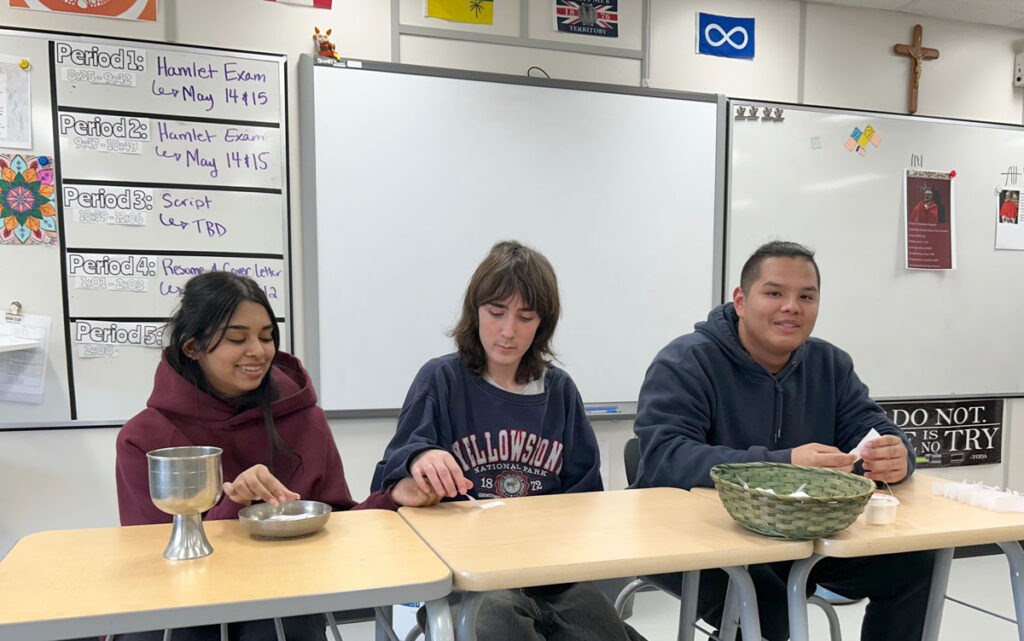 The three scrutineers monitored the election process during the classroom conclave at Holy Cross Catholic High School.
The three scrutineers monitored the election process during the classroom conclave at Holy Cross Catholic High School.
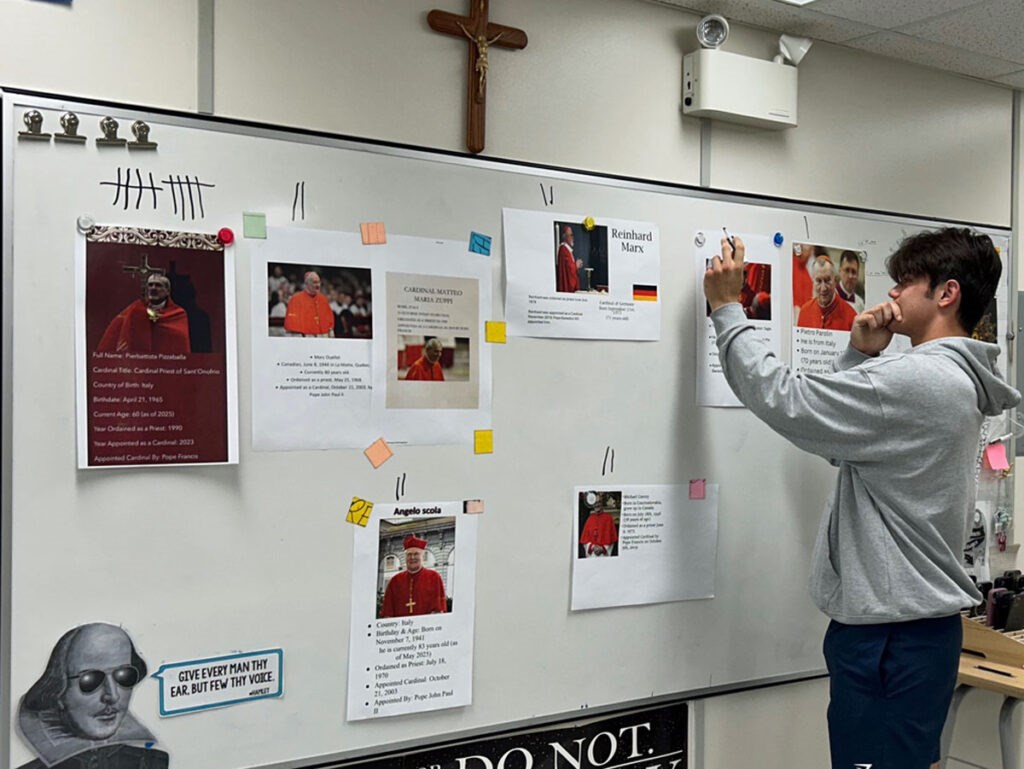 Students created posters for a number of the cardinals eligible for election as the next pope.
Students created posters for a number of the cardinals eligible for election as the next pope.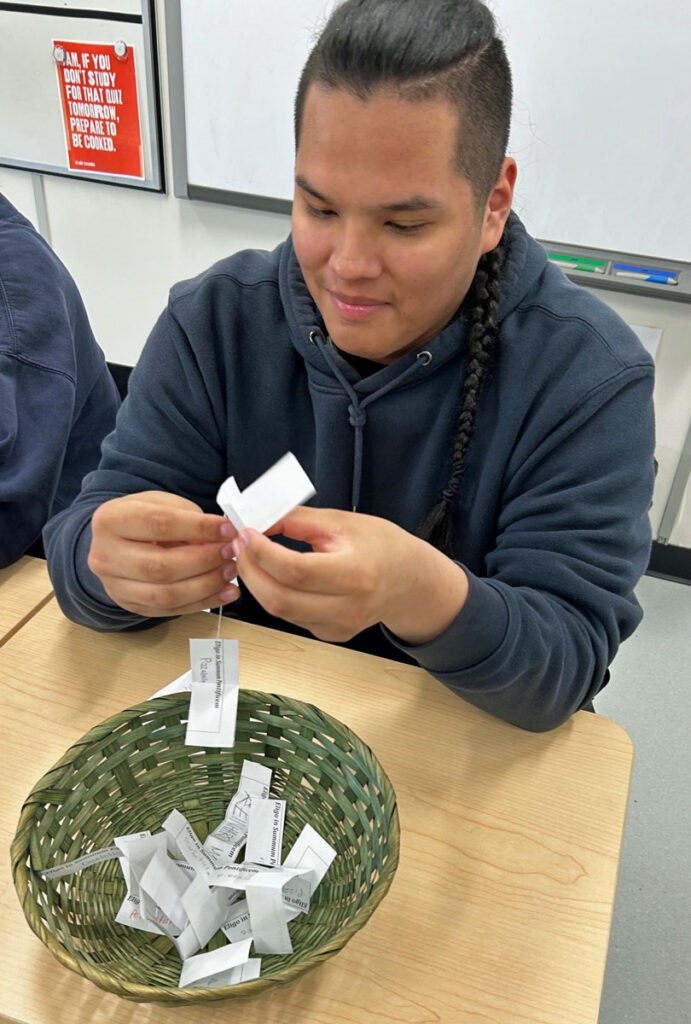 The ballots were sewn together after each round of voting.
The ballots were sewn together after each round of voting.
After the second round, Canadian Cardinal Michael Czerny made a surge and passed Pizzaballa, but still not with the two-thirds majority. Ballots were sewn together, there was more discussion, and a third round of voting began.
After the third round, it seemed that Cardinal Czerny had won – but after a careful recount by the revisers, he was still one vote short. Voting was over for the day: a black smoke day.
Thursday, May 8, our fourth round of voting had Cardinal Pizzaballa in front, but not with the two-thirds majority.
The fifth round of voting was the final vote, with Cardinal Pizzaballa finally being elected as pope in our classroom conclave.
Our student researchers determined that he would choose the name Pope Stephen X. They promoted him as someone who would strengthen Catholic-Jewish relations since he was the Cardinal of Jerusalem, spoke Hebrew, and had concern for migrants. Cardinal Michael Czerny had been promoted because he was from Canada, was a Jesuit like Pope Francis was, would promote social justice, and give women a greater role in the Church.
This experience allowed the students to become fully aware of the diversity of the Catholic Church. The different ages, backgrounds, countries and charisms represented by the cardinals of the Church was very eye-opening.
The students also discovered that on four “where do they stand?” issues – blessing of same sex marriages, optional celibacy for priests, ordaining women deacons, and Latin Masses – there was a remarkable range of stances among the cardinals. I believe that this helped the students to see that the beauty of the Catholic Church is not that we are all identical, but we represent every stance that there is, that we are passionate about what we believe, and through the grace of the Holy Spirit we are unified as disciples of Christ.
It was a great week, and we look forward to seeing where Pope Leo XIV leads us.
